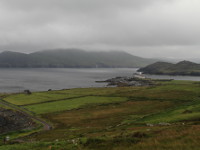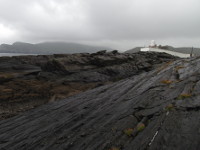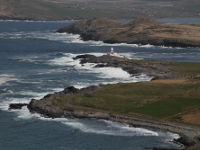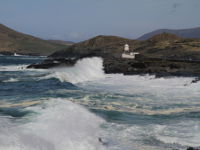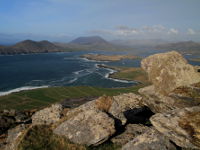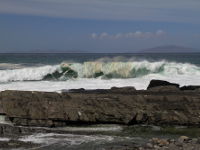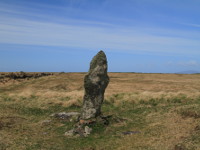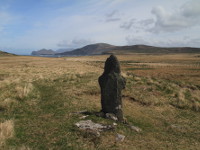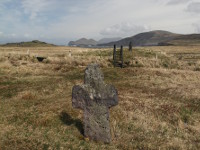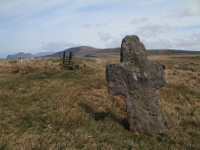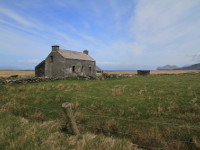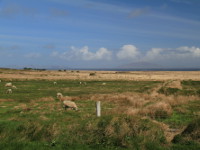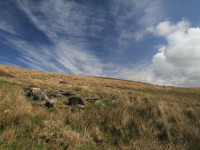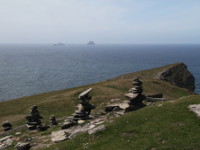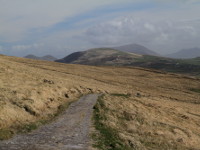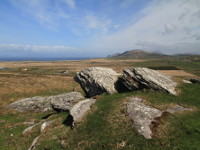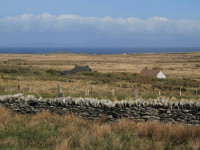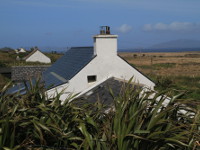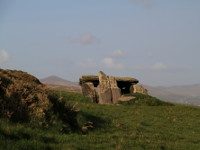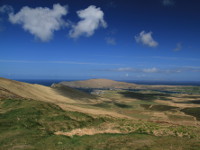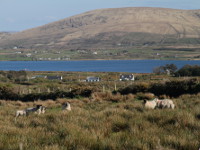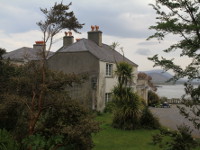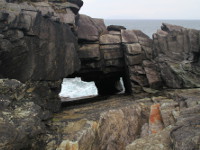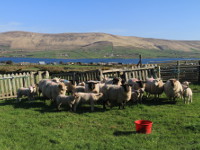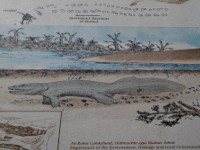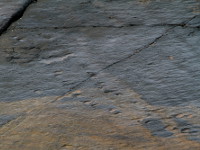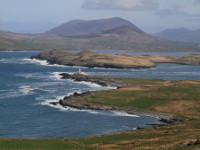
Valentia%20Island
Southwest Ireland | County Kerry
Valentia Island, is one of Ireland's most westerly points, lying off the Iveragh Peninsula in the southwest County Kerry. The island is linked to the mainland by bridge at Portmagee and by car ferry departing from Renard Point (5km from Cahersiveen) to the village of Knightstown. The island stands out abundant wildlife supported by the warm Gulf Stream and offers stuning sights of surrounding area. Geokaun Mountain and Fogher Cliffs are the Valentia Island's highest points, from where the Blasket Islands, Dingle Peninsula and MacGillycuddy Reeks (the highest mountain range in Ireland) can be seen. The Bray Head, situated on the on the south western tip of the island provides commanding views of Skellig Islands. Valentia Island has also many important sites of geological, archeological and historical interest. On Bray Head there is a ruin of 19th century tower, built to protect coast from the possible french invasion. Then, until 1920’s the Bray Tower was used by naval authorities as a signal station. On the southern slopes of Geokaun mountain there is megalithic wedge tomb dating from Bronze Age. The oldest traces on the island dates back to over 365 millions years, and were left by four legged vertebrates (amphibians) moving over land. Fossilized Tetrapod tracks found on Valentia Island are a discovery of international significance representing the transition of life from water to land - a important turning point in evolution. The island is also renowned for being the base for first transatlantic telegraph cable. Cable station on Valentia Island has operated for 100 years, until 1966. On the boggy plain on the northwestern part of Valentia Island there is St Brendan's Well. The legend says that here, in the 5th century, St Brendan baptised and anointed two dying pagans who became first converts on the island. Near to the well there are three early medieval stone crosses. On the northwestern tip of the island there is beautifully situated Valentia Lighthouse, which is open for touring. To the south of the lighthouse there is the 18th century Glanleam House, known for its subtropical gardens, lushly growing thanks to the warm GulfStream. Not far from the gardens, there is famous Valentia Slate Quarry, first established in 1816 and known for the excellent quality of the slate, used in many fine buildings in Ireland and overseas, including London's Houses of Parliament, Westminster Abbey and Cathedral or Paris Opera House. Quarry operated until 1910. In 1954 statues of Our Lady & Bernadette where placed high above the quarry entrance and since then The Grotto become host to various religious events, including a yearly community mass. In 1998 Valentia Slate Quarry was reopened and is being successfully exporting their products around the world. Right by the bridge connecting Valentia with Portmagee, there is The Skellig Experience Visitor Centre dedicated to the Skellig Island history and wildlife. Visitor centre also offers two-hour cruise around the Skellig Islands and 45-minute mini cruise to Bray Head. The Knightstown is main village on the island and offers quality accommodation, cafes, restaurants, gift shops, bars and heritage center. Village is pleasant and lively in summer time.
Photos from Valentia%20Island
